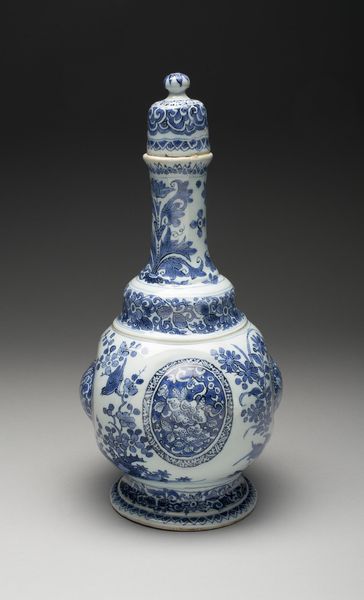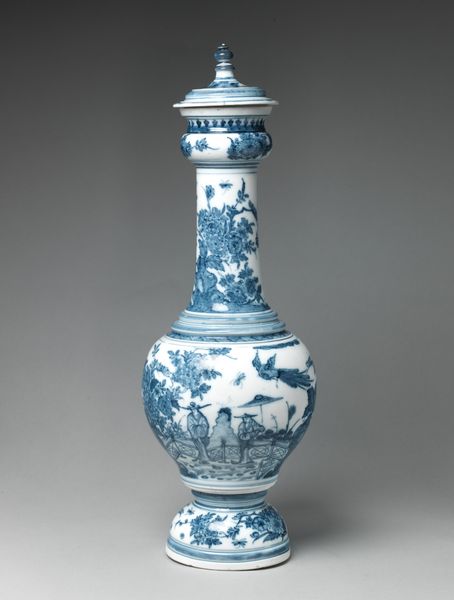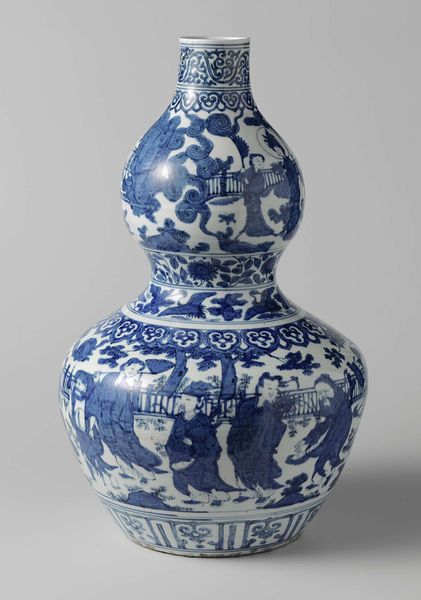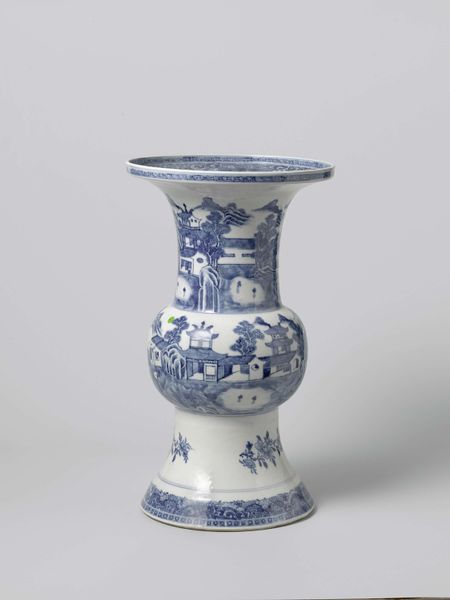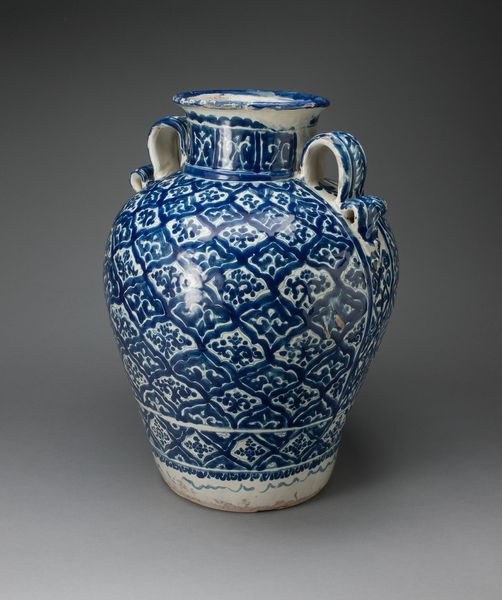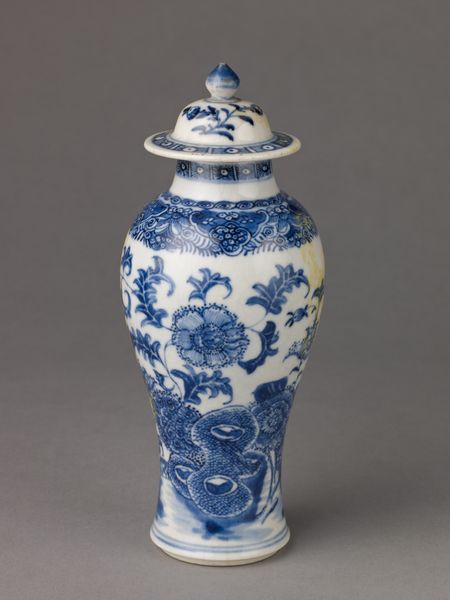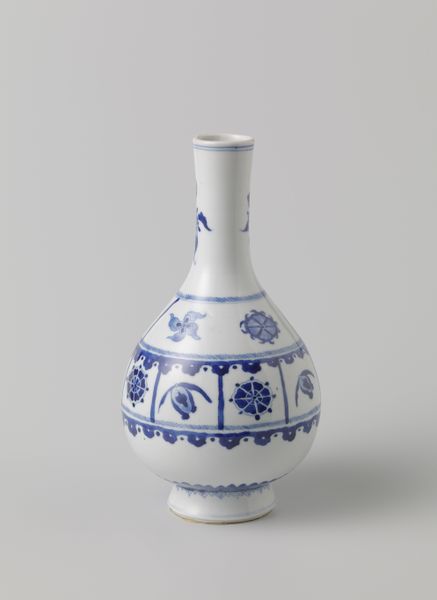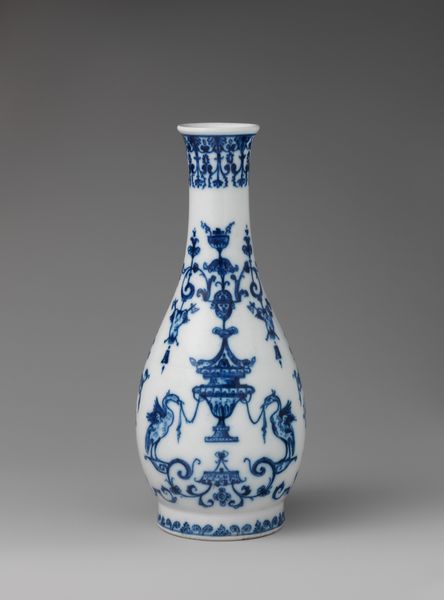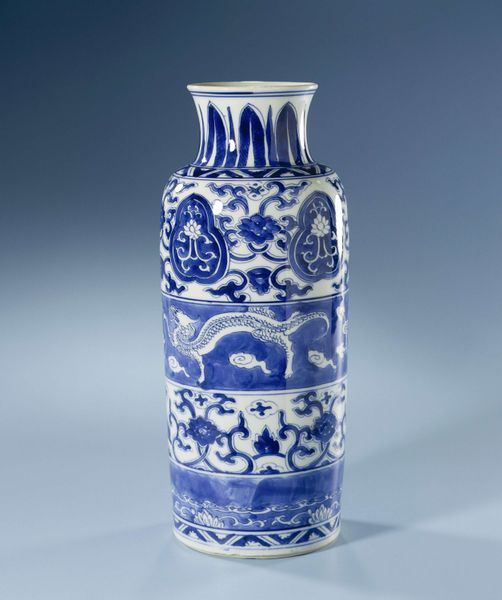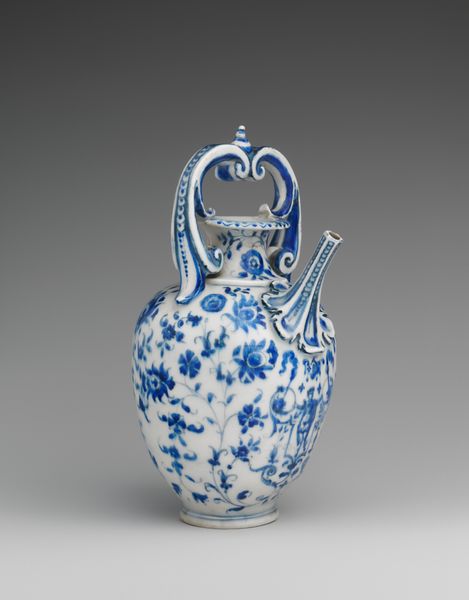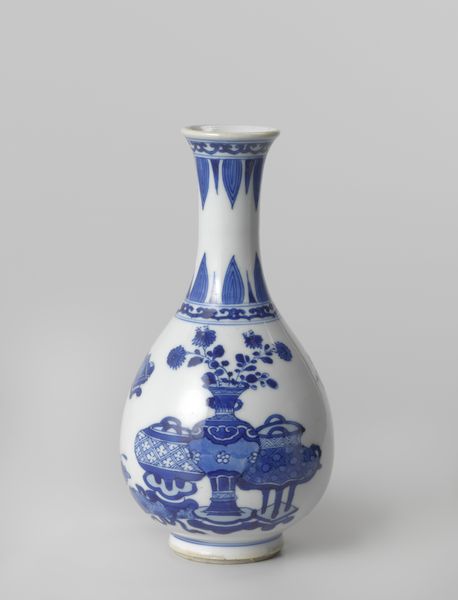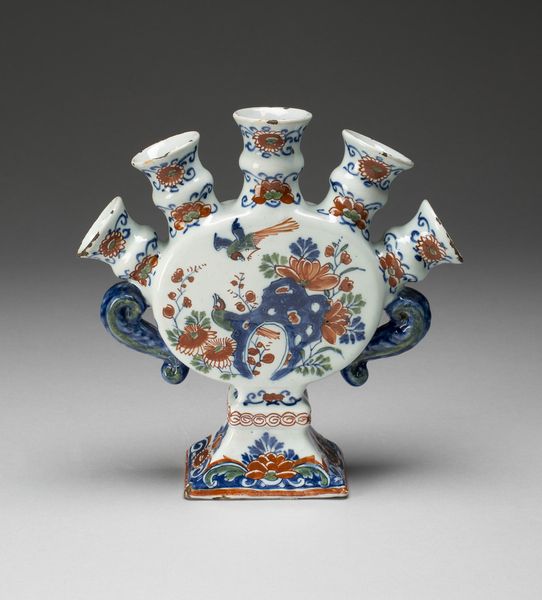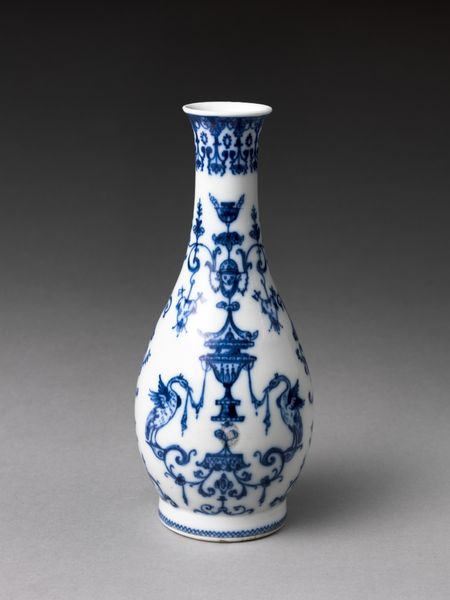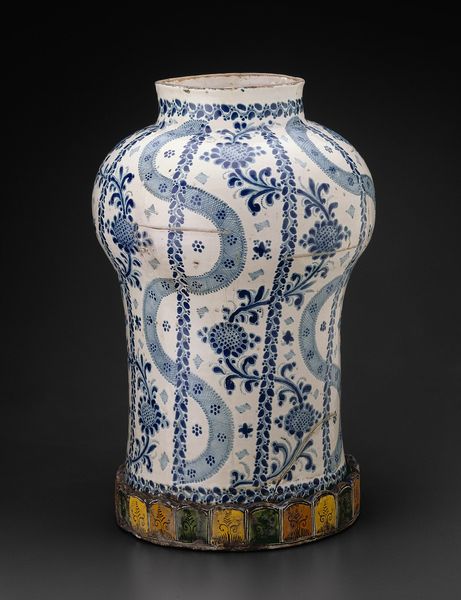
ceramic
#
dutch-golden-age
#
ceramic
#
ceramic
#
decorative-art
Dimensions: 46 1/16 × 15 3/8 × 15 1/4 in. (117 × 39.05 × 38.74 cm) (approx.)
Copyright: Public Domain
Editor: Here we have a piece titled "Flower Vase" dating back to around 1700. It's a ceramic artwork located at the Minneapolis Institute of Art, carrying the distinctive traits of the Dutch Golden Age. Visually, it's quite striking—it looks so tall, composed with tiered layers, decorated with Delftware designs, which, upon closer examination, has many delicate features. What formal qualities define this piece for you? Curator: Its structure is paramount. Notice how the vase ascends in a series of diminishing, yet formally similar, tiers. This creates a compelling verticality. The repetition of form—the bulbous bodies, each crowned with small, spout-like openings—establishes a powerful rhythm. Editor: Rhythm is definitely present. What about the decorative elements? How do you view those? Curator: Precisely. The application of Delftware blue and white serves not merely as surface decoration but fundamentally informs the artwork's aesthetic identity. Consider the way patterns—foliage, geometric motifs—interplay to establish tension between surface and form. Note how the color scheme, the restricted palette of blue on white, lends itself to this end, directing our eye. Editor: It really is a well organized hierarchy, and the consistent choice of a single palette does bring coherence to the design! But how does this relate to contemporary design values? Curator: This artifact engages in complex play with both line and volume while being simultaneously functional and ornamental, challenging easy categorization within art historical classifications, or later "design." One could extend semiotic interpretation regarding class and display and the emerging wealth of this period, though the piece seems equally valid in the language of pure structure. Editor: It’s intriguing to think about how seemingly 'simple' color choice directs our attention through something as complex and visually captivating as this vase! Curator: Indeed, examining these intrinsic elements—structure, pattern, color—unlocks a deeper engagement with the aesthetic values and conceptual tensions within this ceramic artwork.
Comments
minneapolisinstituteofart almost 2 years ago
⋮
“Tulip mania” reached its height in the 1630s in Europe, with wealthy men and women spending great sums of money to acquire exotic tulip bulbs from the Middle East. More generally, there was enthusiasm for all types of rare flowers, such as marigolds, which came from Mexico via Spain. Potters in Holland created elaborate multitiered vases like this one to showcase colorful blooms. Here, the borders of scrolling lotuses, chrysanthemums, ruyi (scepter heads), and the Chinese character for longevity are copied from decoration on Chinese blue-and-white porcelain vases imported in large quantities in the 1600s. It is unlikely that Dutch craftsmen or customers knew the meaning of these motifs. This vase is an outstanding example of Dutch potters’ achievements around 1700. When Chinese porcelain imports to Europe dried up in the 1650s because of political instability in China, Delft potters stepped in to fill the breach. While the benefits of international trade are debated today, such global interaction has historically sparked creativity in the world of art, acting as a spur to innovation. Owing to its scale and complexity, this vase is a significant addition to Mia’s collection of Delft pottery.
Join the conversation
Join millions of artists and users on Artera today and experience the ultimate creative platform.
